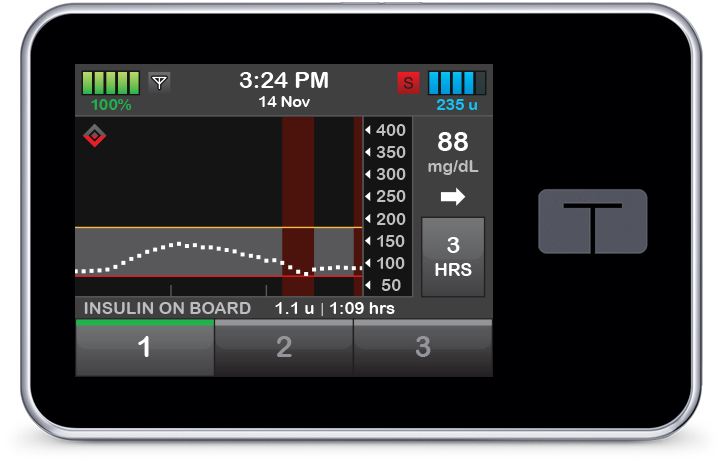Alternative Ways For Taking Insulin
Many people with diabetes must take insulin to manage their disease. Most people who take insulin use an insulin Pen or needle and syringe to inject insulin just under the skin. Several other devices for taking insulin are available, and new approaches are under development.
Insulin pens provide a convenient, easy-to-use way of injecting insulin and may be less painful than a standard needle and syringe. An insulin pen looks like a pen with a cartridge. Some of these devices use replaceable cartridges of insulin. Other pens are prefilled with insulin and are totally disposable after the insulin is injected. Insulin pen users screw a short, fine, disposable needle on the pen’s tip before an injection. Then users turn a dial to select the desired dose of insulin, inject the needle, and press a plunger on end to deliver the insulin just under the skin.
VGO is a mechanical pump like device-read more
Inhaled Insulin-Afrezza–read more
External insulin pumps are typically about the size of a deck of cards or cell phone, weigh about 3 ounces, and be worn on a belt or carried in a pocket. Most pumps use a disposable plastic cartridge as an insulin reservoir. A needle and plunger are temporarily attached to the cartridge to allow the user to fill the cartridge with insulin from a vial. The user then removes the needle and plunger and loads the filled cartridge into the pump.
Insulin pumps contain enough insulin for several days. An infusion set carries insulin from the pump to the body through flexible plastic tubing and a soft tube or needle inserted under the skin.
Disposable infusion sets are used with insulin pumps to deliver insulin to an infusion site on the body, such as the abdomen. Infusion sets include a cannula-a needle or a small, soft tube-that the user inserts into the tissue beneath the skin. Devices are available to help insert the cannula. Narrow, flexible plastic tubing carries insulin from the pump to the infusion site. An adhesive patch or dressing holds the infusion set in place on the skin’s surface until the user replaces it after a few days.
Users set the pumps to trickle or “basal” insulin throughout the day continuously. Pumps can also give “bolus” doses-one-time larger doses-of insulin at meals and when blood glucose is too high based on the user’s programming set. Frequent blood glucose monitoring is essential to determine insulin dosages and to ensure that insulin is delivered.
Injection ports provide an alternative to daily injections. Injection ports look like infusion sets without the long tubing. Like infusion sets, injection ports have a cannula that is inserted into the tissue beneath the skin. On the skin’s surface, an adhesive patch or dressing holds the port in place. The user injects insulin through the port with a needle and syringe or an insulin pen. The port remains in place for several days and is then replaced. An injection port allows a person to reduce skin punctures to one every few days to apply a new port.
Using an injection port reduces skin punctures to one every few days to apply a new port. The user injects insulin through the port.
Insulin jet injectors send a fine spray of insulin into the skin at high pressure instead of using a needle to deliver it.
Artificial pancreas?
Researchers have long sought to link glucose monitoring and insulin delivery to overcome current insulin therapy limitations by developing an artificial pancreas. An artificial pancreas is a system that will mimic, as closely as possible, the way a healthy pancreas detects changes in blood glucose levels and responds automatically to secrete appropriate amounts of insulin. Although not a cure, an artificial pancreas can significantly improve diabetes care and management and reduce the burden of monitoring and managing blood glucose.
An artificial pancreas based on mechanical devices requires at least three components:
- a continuous glucose monitoring (CGM) system
- an insulin delivery system
- a computer program that adjusts insulin delivery based on changes in glucose levels
CGM systems approved by the U.S. Food and Drug Administration (FDA) include those made by Abbott, DexCom, and Medtronic. A CGM system paired with an insulin pump is available from Medtronic. This integrated system, called the Medtronic G670 and G770, is not an artificial pancreas. Still, it does represent the first step in joining glucose monitoring and insulin delivery systems using the most advanced technology available.
Important
- People who take insulin should monitor their blood glucose levels regularly.
- Good glucose control can prevent complications of diabetes.
Be Informed. Get In Control. Prevent.
Better late than never
Coming Soon!
Available Aug 16, 2019
Diabetes Cure
Be Informed. Get In Control.

Our Blog
Follow Along
Screening For Diabetes
Diabetes Screening and Diagnosis Who Should Be Screened? Everyone aged 45 and older should be screened for diabetes or glucose abnormalities every three years. However, individuals at higher risk should begin screening earlier and more frequently—ideally once a year....
Disaster Planning
you never know When Disaster Occurs Emergency Preparedness for People with Diabetes When natural disasters or emergencies strike—such as hurricanes, floods, wildfires, or power outages—being prepared can protect your health and even save your life. Everyone with...
Neuropathy
Important to reduce all risk factors Diabetic neuropathy Diabetic neuropathy, a common complication of diabetes, encompasses various types of nerve damage resulting from prolonged high blood sugar levels. It can affect different parts of the nervous system, leading to...
Contact Us
The newsletter is only sent if there are any new blogs or articles added.

